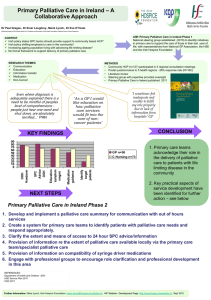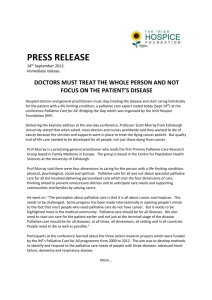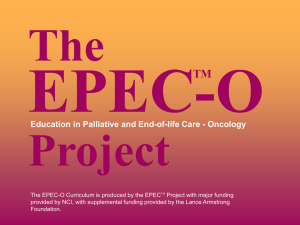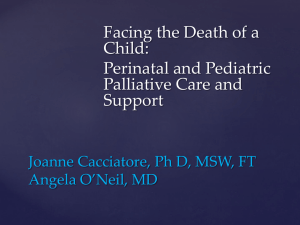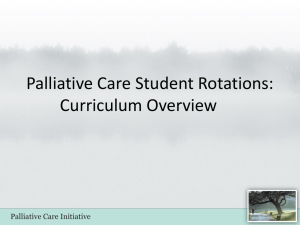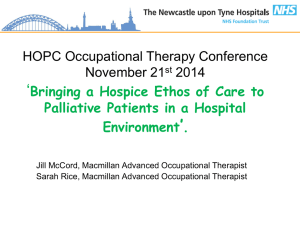Establishingamethodt... - Lenus,the Irish health repository
advertisement
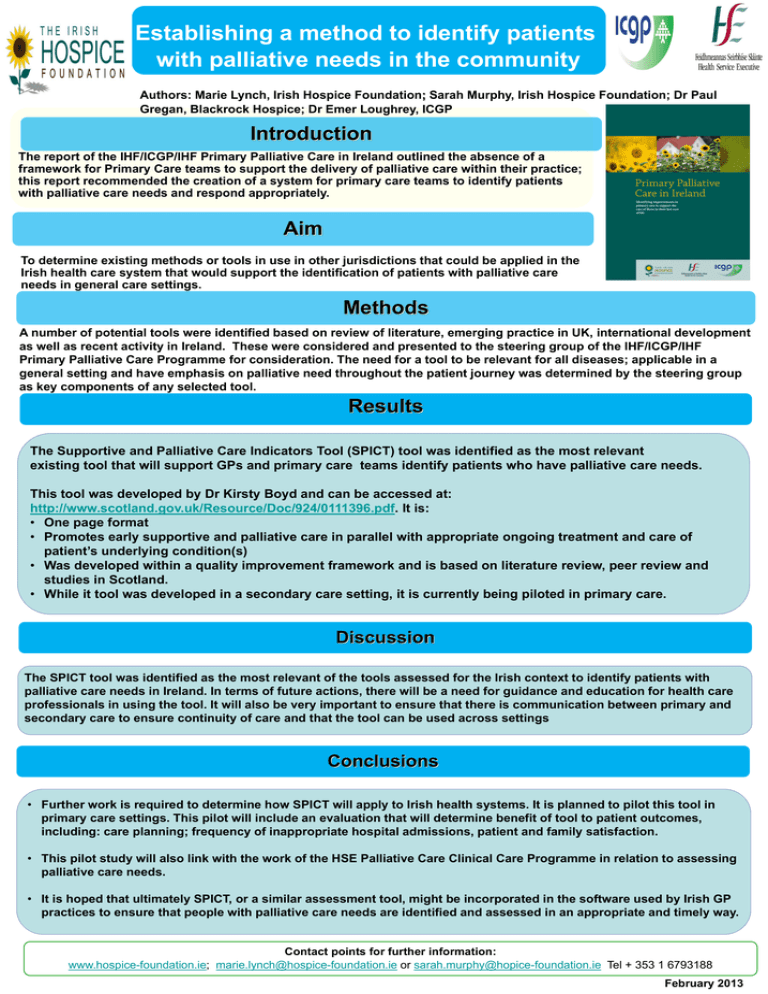
Establishing a method to identify patients with palliative needs in the community Authors: Marie Lynch, Irish Hospice Foundation; Sarah Murphy, Irish Hospice Foundation; Dr Paul Gregan, Blackrock Hospice; Dr Emer Loughrey, ICGP Introduction The report of the IHF/ICGP/IHF Primary Palliative Care in Ireland outlined the absence of a framework for Primary Care teams to support the delivery of palliative care within their practice; this report recommended the creation of a system for primary care teams to identify patients with palliative care needs and respond appropriately. Aim To determine existing methods or tools in use in other jurisdictions that could be applied in the Irish health care system that would support the identification of patients with palliative care needs in general care settings. Methods A number of potential tools were identified based on review of literature, emerging practice in UK, international development as well as recent activity in Ireland. These were considered and presented to the steering group of the IHF/ICGP/IHF Primary Palliative Care Programme for consideration. The need for a tool to be relevant for all diseases; applicable in a general setting and have emphasis on palliative need throughout the patient journey was determined by the steering group as key components of any selected tool. Results The Supportive and Palliative Care Indicators Tool (SPICT) tool was identified as the most relevant existing tool that will support GPs and primary care teams identify patients who have palliative care needs. This tool was developed by Dr Kirsty Boyd and can be accessed at: http://www.scotland.gov.uk/Resource/Doc/924/0111396.pdf. It is: • One page format • Promotes early supportive and palliative care in parallel with appropriate ongoing treatment and care of patient’s underlying condition(s) • Was developed within a quality improvement framework and is based on literature review, peer review and studies in Scotland. • While it tool was developed in a secondary care setting, it is currently being piloted in primary care. Discussion The SPICT tool was identified as the most relevant of the tools assessed for the Irish context to identify patients with palliative care needs in Ireland. In terms of future actions, there will be a need for guidance and education for health care professionals in using the tool. It will also be very important to ensure that there is communication between primary and secondary care to ensure continuity of care and that the tool can be used across settings Conclusions • Further work is required to determine how SPICT will apply to Irish health systems. It is planned to pilot this tool in primary care settings. This pilot will include an evaluation that will determine benefit of tool to patient outcomes, including: care planning; frequency of inappropriate hospital admissions, patient and family satisfaction. • This pilot study will also link with the work of the HSE Palliative Care Clinical Care Programme in relation to assessing palliative care needs. • It is hoped that ultimately SPICT, or a similar assessment tool, might be incorporated in the software used by Irish GP practices to ensure that people with palliative care needs are identified and assessed in an appropriate and timely way. Contact points for further information: www.hospice-foundation.ie; marie.lynch@hospice-foundation.ie or sarah.murphy@hopice-foundation.ie Tel + 353 1 6793188 February 2013
